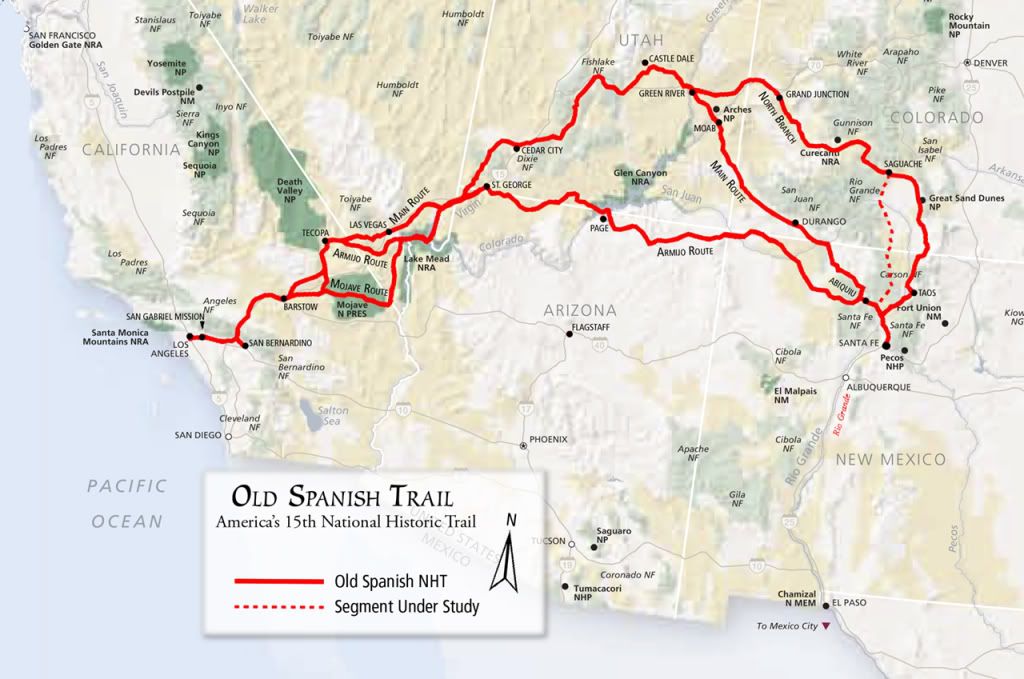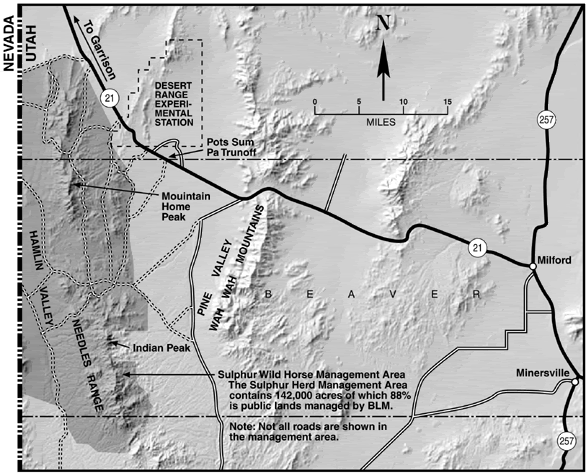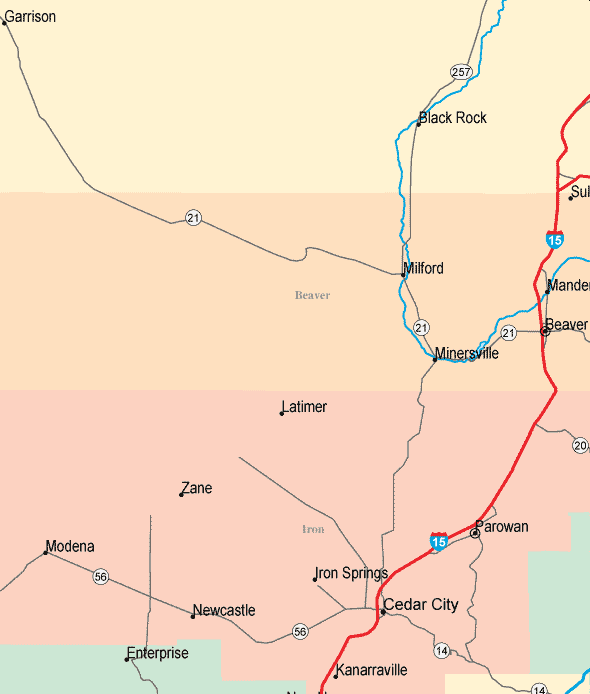"LITERATURE
The earliest reference to horses being in the southwestern Utah area is from the journal made by Father Silvestre Velez de Escalante during the 1776 Dominguez-Escalante expedition. Horses were referred to were those taken on the expedition. Herbert E. Bolton has an article entitled "Pageant in the Wilderness", in Utah Historical Quarterly in which he mentions that: "How many mules and horses the wayfarers had is not stated, but there must have been numerous extra mounts."
Escalante also refers to "the horse herd" in his journal, which would also suggest many animals. On October 2, while in an area south of Delta, Utah, the horse herd wandered off due to thirst, but was recovered. On October 8, in an area north of Milford, Utah, Escalante writes: "We traveled only three leagues and a half with great difficulty, because it was so soft and miry everywhere that many pack animals and mounts, and even those that were loose, either fell down or became stuck altogether." These were the only remarks concerning their horses during this time, but they were in areas fairly close to the Mountain Home Range. At this time they also encountered a very bad snow storm with accompanying strong winds and cold temperatures. Some horses possibly escaped, but there is no record of it.

Gale Bennett, Wild Horse Specialist for the BLM's Richfield District, also has an interest in the Mountain Home Range's Spanish type horses. He has been looking for books about their history. Three months ago he introduced me to a book that I feel holds the key to where these horses came from. The book,"Old Spanish Trail", by Leroy R. Hafen and Ann W. Hafen was first published in 1954, and is again in print from Bison Book Company. The Hafens extensively researched the history of the Old Spanish Trail, which was the main trade route linking Santa Fe, New Mexico to Los Angeles, California from 1830 to 1848.According to the Hafens: "The Old Spanish Trail was the longest, crookedest, most arduous pack mule route in the history of America. Envisioned and launched in the late 1700s to serve as a connecting link between two of Spain's colonial outposts, the Trail reached its short- lived heyday in the 1830s and '40s, when annual caravans packed woolen blankets from New Mexico to trade for California horses and mules." Literally thousands of horses were driven over this trail from southern California to New Mexico. Part of the route led across the Escalante Desert, south of the Needle Range.

Many horses were obtained by men such as Antonio Armijo who was actually the first to start legal trade over the trail in 1830. Other accounts mentioned in the book were of John Rowland leaving Cajon Pass with 300 horses on April 7, 1842, followed by 194 New Mexicans, on April 16, with 4,150 animals legally acquired; James P. Beckwourth with 1,800 horses in 1844; and Joe Walker with four or five hundred horses and mules in the spring of 1846.
Much is discovered in "0ld Spanish Trail's" chapter on "Horse Thieves" where the Hafens write: "Although the value placed on wild horses was generally low, the tame stock in use at missions and ranchos and the mules, produced by careful breeding, were more highly prized. Loss of tame animals by theft was always a matter of concern. Soon the more irresponsible traders and certain adventurers found it easier to obtain livestock by raid than by trade. By 1832 raids on the herds of missions and ranches had become so frequent and devastating that Californians were alarmed." The Hafens give examples of many illegal raids, but the most spectacular one was that of Pegleg Smith and Ute Indian chief, Walkara, in 1840. Apparently, raids on California horse herds were many during this time, and Ute Indian raids did not cease until Walkara's death in 1855."

In the 1954 book, "Walkara, Hawk of the Mountain", by Paul Bailey, more detail is written into before, during, and after the 1840 raid in southern California. The book mentions Walkara's part in the Indian slave trade and how he was feared by lesser tribes without horses.
Robert M. Denhardt tells of the 1840 horse raid in his book, "The Horse of the Americas". His rendition of the story is quite good. He states that though the thieves initially got away with 3,000 horses, the Californians recaptured 1,200. He also writes: "As a rule, stolen horses were sold in Utah or taken directly to Santa Fe." He writes of Miles Goodyear, in the spring of 1848, driving 230 legally acquired horses from southern California into Utah. Goodyear traveled across the Escalante Desert north to the Sevier River. Of significance in Denhardt's story is a statement that can probably be applied to all the herds of horses driven across the Old Spanish Trail: "When first leaving California, they (the horses) must have taken every opportunity to bolt for the thickets and any other likely-looking chance which might mean freedom."



"These books document well how Spanish horses could have populated the southwestern Utah area. I have found no references of any other breeds of horses coming into or establishing a population in the area before settlement. "
Outstanding Blog Kim, keep up the good work! This is such a wonderful and informative blog and a real asset to the Spanish Sulphur breed.
ReplyDeleteAbsolutely love Sulphur's Anhur Maximus!!!
;)S